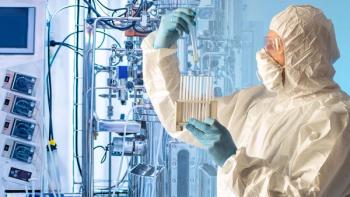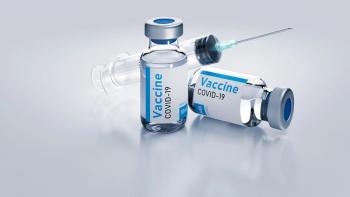
- BioPharm International-12-01-2017
- Volume 30
- Issue 12
Single-Use Bioreactors Pose E&L Challenges
A roundtable Q&A with biopharma executives elucidates the challenges posed by single-use bioreactor bags in contributing to extractables and leachables in the biomanufacturing process.
The use of plastic bioreactor bags in single-use systems pose their own set of unique challenges for determining the presence and mitigating the risks of extractables and leachables (E&L) in the biomanufacturing process. What are these challenges and how can a manufacturer troubleshoot the problems that can affect product quality and efficacy?
BioPharm International interviewed Derek Wood, associate director, Extractable/Leachable and GC/MS Services at PPD Laboratories; James McLean, manager, Analytical Science at Catalent Pharma Solutions; Andreas Nixdorf, business development manager at SGS Life Sciences; and John Iannone, director, Extractables/Leachables & Impurities at AMRI to get their take on the vulnerability of single-use bioreactors to E&L.
Bioreactor vulnerability
BioPharm: Are single-use bioreactors, which are typically comprised of plastic, vulnerable to contamination by E&L material, and how vulnerable are they?
Wood (PPD): Extractable/leachables evaluation for all types of components used in biopharmaceutical single-use system manufacturing components, including single-use bioreactors, is an important consideration and is a hot topic in the industry.
The advantages of the disposable manufacturing process for biologic production are well understood, but, unfortunately, many of the elastomeric and polymeric components used in such processes, such as plastic films used in bioreactors, are more likely to contribute impurities in the form of leachables compared to more traditional, fixed manufacturing equipment components. Leachables from single-use component materials may propagate to the final drug product and potentially present a direct health risk to the patient, but, even more likely for biologics manufacturing especially, a key concern is the potential for leachables to alter the quality and efficacy of the product itself.
A single-use bioreactor utilizes a disposable bag in place of a fixed culture vessel. Such bags typically are constructed of multi-layer, polymer films, incorporating the use of a middle barrier layer (for example, ethylene vinyl alcohol) sandwiched between an inner film, such as polyethylene, that has direct contact with the cell-culture media, and an outer layer film designed to impart structure/strength and durability. The outer layer material may be, for example, a modified form of polyethylene, nylon, or polyester, and the three layers are bonded together in the material manufacturing process.
The film material types for the different layers will vary based on the supplier. For example, in some cases, the inner layer may be polypropylene with polyvinyl alcohol as the middle layer.
McLean (Catalent): The single-use bioreactor system (SUS) is more susceptible to extractables due to the nature of the materials of construction. These SUSs are designed to be highly flexible. In order to achieve the desired flexibility, the materials of construction tend to be polymers with lower levels of crystalline structure, such as low-density polyethylene (LDPE), which would facilitate higher diffusion of chemical species, such as plasticizers, antioxidants, thermal stabilizers, slip compounds, and monomers. This is further exacerbated by the intended use of the SUS.
Historically, manufacturing and in-process equipment involved transient contact times with the API and/or drug product media measured in minutes to hours. For SUSs, their contact time may be days, or, in the case of intermediate bulk storage, years. These extended exposure conditions serve to make the extractable potential a higher risk.
Nixdorf (SGS): Plastic bags are often made from different film layers that can be made with different resins, each of which has a unique combination of properties that makes it ideal for certain applications. For example, low-density polyethylene film acts as a gas barrier, which is necessary for drug packaging because the drugs would quickly spoil if exposed to oxygen. Polyvinyl chloride film, on the other hand, is gas permeable, but an excellent barrier against moisture.
Polyester films can be used as mono films for pharmaceuticals requiring low moisture barrier, or they can be integrated into barrier structures. Plastic films also can be clear or colored, printed or plain, single- or multi-layered and combined with other materials, such as aluminum and paper. For bag construction, multi-film constructions are mostly used. Thus, depending on the bag construction, leachables can be originated from different polymer sources.
Iannone (AMRI): [Single-use] reactors are certainly vulnerable to imparting E&Ls into the contents of the bioreactor cell-culture medium. Depending on the additives that are needed for the bioreactor bag, there are a number of different compounds that can leach out and be present within the cell-culture medium. An example, which was published in a scientific journal (1), is a very well documented finding where Chinese hamster ovary (CHO) cells used in bioreactor bags, under a specific instance, were dying off.
It was later discovered that, in the post-gamma-irradiation of the bag, a leachate derived from one of the antioxidant’s breakdown products was producing a compound that was responsible for killing off the CHO cells, even when the compound was present at very low levels. While it wasn’t of toxicological consequence to the patient, it still had a significant impact on bioproduction at that early stage and was affecting the efficacy of the process.
Another point to consider is that single-use-bioreactors are typically very large bags that expose an abundant surface area of the polymer to whatever it is that is in the bag. As the surface area of the material increases, so does the potential for leaching out various additives, breakdown products of the additives, breakdown products of the polymer itself, and different residues from the process.
The high surface area certainly increases the vulnerability for this leaching to occur, although larger bags typically will result in a lower bag material surface area to content solution volume ratio. This ratio suggests the concentration of a leachate would be lower, regardless of the increased probability.
The type of product that is contained within the bioreactors also can have a direct effect on the leachability of some of those compounds. Extraction propensity and solubility play a significant role in what will come out. Furthermore, time and temperature can drive leachates. When talking about bioreactors and cell culture, it is desireable to optimize the conditions for those cells to behave in the way they are intended to in order to produce the desired product efficiently. Typically, they operate with slightly elevated temperatures--about 37°C--to optimize cell proliferation, and with that slight elevation in temperature, they increase the potential for extractability. All of these different factors or parameters play a role in how vulnerable these systems are.
One additional point to consider is that bioreactor bags tend to be more amorphous in nature in terms of the polymer. The more amorphous the polymer is, the more amenable it is to allowing leachates to diffuse from the polymer into its surrounding environment.
E&L testing
BioPharm: At which stage(s) of the biomanufacturing process is testing done to determine the presence of E&L, and what can be done about it in real-time if detected?
McLean (Catalent): An effective risk management and risk mitigation is essential to the effective control of extractables associated with any biomanufacturing process. This should be a product control lifecycle strategy with equal focus on the three critical tiers of materials, container closure, and processing systems and drug products.
For raw materials (both product-related and manufacturing), it is vital to ensure processes exist to monitor precursor material controls, material controls, service level agreements with vendors, periodic evaluation of control monitoring methodology, and a robust requalification program. For drug products, major considerations should be the drug product method development and validation, appropriate stability testing, toxicological assessments on an ongoing as needed basis, and a qualification process for unknowns. And for the container closure system and SUSs, one must ensure it is possible to fully characterize and understand the materials of construction and their associated extractables. This may take the form of controlled extraction studies, simulation/migration studies, and drug-device interaction studies.
Nixdorf (SGS): At those production steps where accumulation of leachables is expected, sampling should be performed and leachables monitored. This should become part of any process qualification.
The profile from different sampling points may be mapped, with the leachables profiles that have been generated after the last filling step. This is to assure that no leachables have been accumulated over the process line. In some cases, target analysis by use of semi-validated methods must be performed to assure that any expected leachables of toxicological concerns have been purified from the process stream.
The sampling strategy depends on the individual biopharmaceutical process and how trustable the single-use components are chemically characterized. A poorly characterized chemical profile in a SUS component poses a higher risk to the process.
Iannone (AMRI): In biomanufacturing processes, people look for the presence of E&Ls through the entire process from the earliest biomanufacturing steps to the very end of the process and all stages in between. Testing is done at multiple stages of biomanufacturing in order to understand how each individual component of that process will have an effect on E&L. In the case of the bioreactor, it is very far upstream in the process--very far from the patient--so it typically has a very minimal impact on safety. E&L should be understood as a function of risk, which needs to be characterized and controlled throughout the entire process.
Regarding what can be done in real-time, there is a lot of innovation going on right now where people have the ability to sample a product throughout bioproduction. They can do different tests that allow one to make modifications based on those results, whether it be a simple total organic carbon content measurement or even just a sampling where one would perform some of the traditional methods used in E&Ls testing such as gas chromatography-mass spectrometry (GC-MS) tests or other analytical techniques. Again, it goes back to the risk characterization and determining what matters most when evaluating E&L impact. There is no one-size-fits-all approach.
Manufacturing concerns
BioPharm: How much of a concern is E&L in biomanufacturing compared to traditional small-molecule pharmaceuticals, for example?
Wood (PPD): As noted previously, the single-use biomanufacturing process that commonly is used for production of large-molecule products increases the amount of direct contact of the process stream with polymeric and elastomeric component materials. That results in a higher degree of overall risk for leachables being introduced to the product, which may interact directly with the product or which may potentially pose a safety concern directly to the patient.
Leachables often present a greater concern in general for biologic and other large protein molecules compared to small-molecule formulations, and this greater concern for large molecules applies as well to leachables that may be introduced from the biomanufacturing process.
There are multiple reasons why large molecules may present a greater concern for leachables. The large size and complex, conformational structure of proteins provides a higher surface area and an increased number of potential active sites where leachable compounds (organic or inorganic) may interact with the protein.
Large-molecule formulations often include solubilizing agents such as polysorbates, which may hasten migration of organic leachables by improving the solubility of such organic compounds in an otherwise typically aqueous medium. The amphiphilic nature of proteins themselves also may hasten the solubilization of organic leachables.
Nixdorf (SGS): In all production lines where stainless steel has been used, the leaching problem is a lower risk compared to processes where single-use technology has been used. Large-molecule formulations are composed of more complex matrices, which may contain surfactants such as polysorbate or poloxamer or related substances that could easily interact with plastic surfaces.
It is often very challenging, or not possible, to discover leachables at trace levels in that “chemical cocktail” by screening methods (not targeted analysis). Complex sample preparations are generally required for biological formulations and there can be issues associated with the recoveries of leachables in the biological matrix.
Proteins could easily capture or bind with lower mass leachables and they do not release them in solution again. Thus, these leachables would run out of the analytical window. In small-molecule manufacturing, discovering of impurities is much more easily performed.
Iannone (AMRI): Because a biologic is a larger molecule and has multiple reaction sites, the presence of other chemical constituents like E&L will have a higher potential for reacting with the biologic, and having some impacts either on the efficacy of the product or on safety to the patient.
The way biologics are made--using single-use systems and having various polymeric systems exposed throughout the entire process--is not as common in small-molecule manufacturing. For small molecules, the manufacturing process traditionally uses glass or stainless-steel reactors. By having fewer polymers exposed, the source of E&L is reduced dramatically.
E&L is a much higher concern for all of the reasons that I just referred to and needs to be characterized accordingly when considering the manufacturing of biologics. The best way to do that is through a comprehensive risk management process followed with appropriate chemical characterization. The trend in recently developed regulatory guidelines reinforces this approach.
Reference
1. M. Hammond et. al, “
Article Details
BioPharm International
Volume 30, Number 12
December 2017
Pages 44–49
Citation
When referring to this article, please cite as F. Mirasol, “Single-Use Bioreactors Pose E&L Challenges,” BioPharm International 30 (12) 2017.
Articles in this issue
about 8 years ago
Transformative Medicines Challenge FDA and Manufacturersabout 8 years ago
Biopharma Outsourcing: A Year in Reviewabout 8 years ago
What’s in Your SOP?about 8 years ago
Survey Measures Biopharma Career Highs and Lowsabout 8 years ago
Reducing Cross-Contamination Risks in Process Chromatographyabout 8 years ago
Wanted: A Highly Skilled Biopharma Workforceabout 8 years ago
Modernizing Lyophilizationabout 8 years ago
QbD Improves Cell-Culture Process Controlabout 8 years ago
Roadmap Leads to Innovative Biomanufacturing Strategiesabout 8 years ago
Reliability Rooms and the Move to Proactive Supply Chain ManagementNewsletter
Stay at the forefront of biopharmaceutical innovation—subscribe to BioPharm International for expert insights on drug development, manufacturing, compliance, and more.





